Searching for Mayhem: Preservation Hall Jazz Band
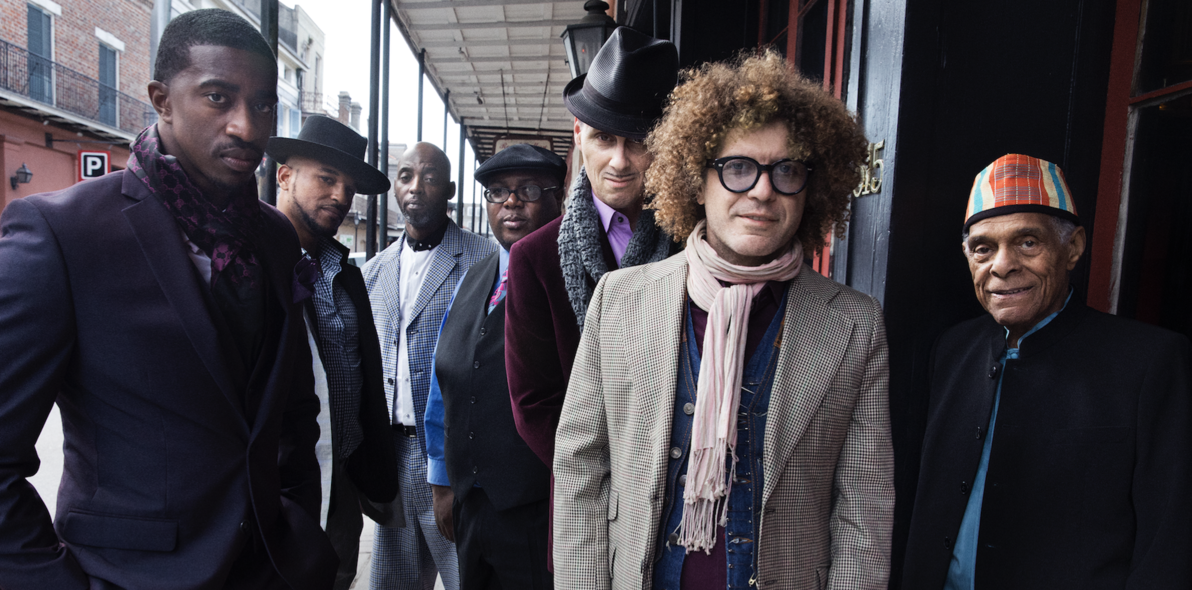
Two elderly gentlemen of different linguistic backgrounds recently congregated in the “House of Jazz” at Havana, Cuba’s Santa Amalia. They can’t communicate verbally, so they speak to each other through clapping, smiling, music and dance.
The two men then stand next to each other. The man in the elegant suit and tie counts off the beat with a hand clap and the tap of his bottle-cap-bottomed white shoes. The sound of the clarinet from the other man fills the concrete room, and his new pal does an elegant tap dance along to the standard “Tea for Two” in perfect time.
After the shared moment, the men laugh, poke each other and hug like lifelong friends. Though Preservation Hall Jazz Band clarinetist Charlie Gabriel and Havana’s Papito Penalver have never physically met before this moment, they share a deep spiritual connection. Their souls bind them together, and though it’s a beautiful moment, the backstory behind that connection is far darker.
The framework for that moment and So It Is, Preservation Hall Jazz Band’s follow-up studio album to their first album of all-original material, 2013’s That’s It!, was laid centuries ago by African slaves and Haitian refugees, those who escaped slavery and those sold to the Americas by the French and Spanish. These slaves and refugees came from the Greater Antilles, made up of Jamaica, Hispaniola, Puerto Rico, the Cayman Islands and Cuba. Most had zero choice in their destinations, and some found their way to New Orleans, the northernmost city in the Caribbean.
The sounds of their ancestral homelands had been carried with them by the current of the Caribbean waters. This sound eventually morphed into what is known today as New Orleans jazz. It not only shares the same bloodline as the music played in the streets of Havana and the hills of Santiago, but it also shares an African heart. 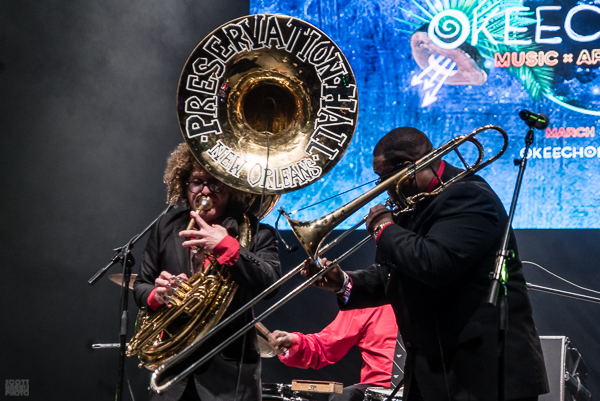
David Kunian, the music curator at the Louisiana State Museum, has traced the migration of sound to New Orleans. “When the Haitian Revolution spawned a mass exodus from Haiti, some came to New Orleans and some went to Cuba,” he says. “In 1809, while fighting the Napoleonic Wars, Spain forced the former French Haitians out of Cuba. Over 10,000 came to New Orleans, which increased the New Orleans population significantly in a very short time. This Cuba-New Orleans connection continued until the Cuban Revolution. Cuba was New Orleans’ biggest trading partner. The Cubans coming to New Orleans influenced much of the music. Professor Longhair’s boogie-rhumba piano stylings are an update of Cuban polyrhythms and a testament to this lineage.”
And, today, Preservation Hall Jazz Band has added a few more chapters to the ever-evolving story of this music. So It Is plays out as both a romp and a living historical document—joy derived from the rhythms and melodies laid down by the sorrow of slaves and immigrants as a thorough piece of modern work that sets the standard for jazz in America.
Preservation Hall’s creative director/upright bassist/tuba player/percussionist Ben Jaffe decided not to tap a traditional or Caribbean-influenced producer to sit at the helm for So It Is. Instead, he selected TV on the Radio’s Dave Sitek, who, in addition to his own cutting-edge band, has guided Jane’s Addiction, Foals, Yeah Yeah Yeahs and Santigold, among others, in the studio.
“We connected with Dave and he inspired us as a band to go as far as we could,” Jaffe says. “Dave told me, ‘You guys could easily make another great album that’s exactly like That’s It!, and you can continue to be that band. But there is something deeper and more connected that you haven’t discovered yet, and that’s up to you guys to figure out.’” 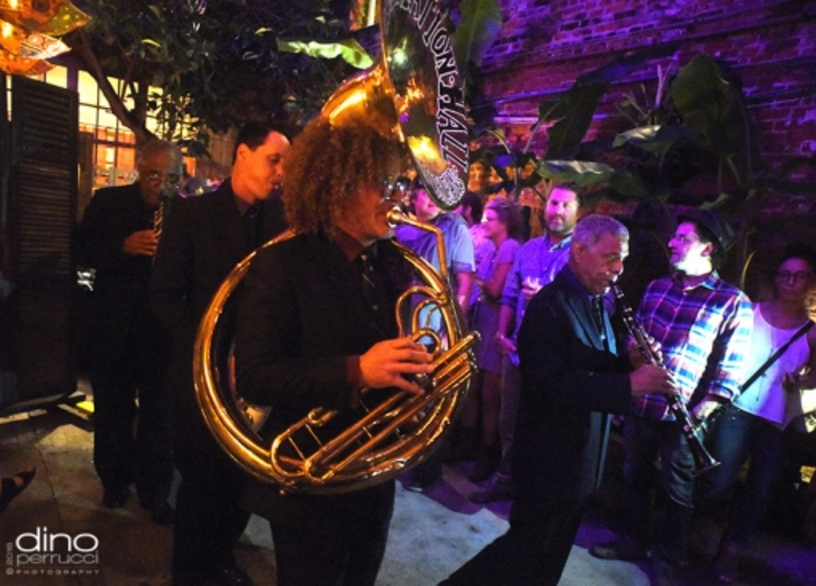
The album’s roots stretch back to a life-changing trip that the members of Preservation Hall Jazz Band took to Cuba in 2015. President Obama started easing travel restrictions to Cuba during his second term and, after he lifted a longstanding travel ban, the country’s rich blend of cultures has started to become a source of creative inspiration for many visitors.
“A gigantic light bulb went off, and we realized that New Orleans music is not just a thing by itself; it’s part of something much bigger. That realization was almost like having a religious epiphany,” says Jaffe. “Going to Cuba answered a bunch of questions we didn’t even know existed, and we had all these amazing experiences and interactions that combined with where the band was.”
Though the Preservation Hall Jazz Band has been a beloved local institution since around the time that Allan and Sandra Jaffe, Ben’s parents, founded the Preservation Hall venue in 1961, the group has moved outside traditional New Orleans circles in recent years. After Hurricane Katrina in 2005 served as an eerie reminder of how precious and important the city is for American music, Ben Jaffe realized his calling and, in recent years, Pres Hall has shared the stage and sat in with such diverse legends as the Foo Fighters, Arcade Fire, Bob Weir, The Black Keys, Stevie Wonder, The Del McCoury Band, Jack Johnson, My Morning Jacket, Drive-By Truckers, Yonder Mountain String Band and members of the E Street Band. This summer, they’ll perform at Red Rocks with Beck.
“They’re seeking us out because they are curious that there is something that could be learned and shared at the same time. The sit-ins are all very personal and meaningful,” Jaffe says. “Each one is a learning experience for us; one of the rarest things to happen between artists, ever, is to collaborate. The artists have to be in a certain state of mind, at a certain time and in a certain place. It doesn’t happen often but, to us, it happens remarkably often. That really speaks to the musicians in the band and to the principles that Preservation Hall is built on, the idea of inclusiveness.”
Jaffe’s French Quarter venue still hosts multiple sets of music every night. While he leads Preservation Hall Jazz Band on the road, members of the group’s extended family and various all-star combos hold down the space. Guest musicians from all corners of the world, and associated with all types of genres, perform regularly, and Jay Z, Billy Joel, Amy Schumer, Kevin Durant and Robert Smith of The Cure have all recently taken in shows at the intimate space. Though surrounded by the Bourbon Street debauchery, Preservation Hall as an organization and foundation is able to take the notion of “supporting good times” and put it into positive action.
Under the Preservation Hall Foundation umbrella, Jaffe and his bandmates have a successful music program that not only helps teach music to kids and employ elders, but also helps spread the love globally, bringing instruments and care packages on their trips to Cuba—instruments that would cost most Cubans several months of wages. The members of Preservation Hall remain engaged on the homefront too, continuing the tradition of second-line parades and jazz funerals with a modern flair. After the death of David Bowie, they joined forces with their new neighbor and pal Win Butler and his band Arcade Fire to lead a second-line parade in Bowie’s memory.
“Our mission and our core values haven’t changed much; they have evolved, to the point where we’ve become missionaries for what we do, and Preservation Hall has become an institution, a destination, a chapel that people seek out because it is rare,” Jaffe says. “Musicians are constantly seeking inspiration, looking around every corner, traveling to remote places because we’ve heard a place is special. That’s the journey of the musician as an artist and we have grown into the skin of an artist.”
The present-day Preservation Hall band reflects the precise blend of what makes up modern-day New Orleans: traditional, alternative prodigies with God-given talent, the church and the sound of the street. Their current lineup is a mix of new members and veterans. Within the past two years, pianist/Wurlitzer wiz/organist Kyle Roussel, trumpeter Branden Lewis and drummer Walter Harris have joined Jaffe, So It Is coarranger Gabriel, saxophonist Clint Maedgen and trombonist Ronell Johnson.
“This has always been a band where the membership has always evolved,” Jaffe adds. “The band that became popular in the ‘70s was not the first Preservation Hall band. That was the second or third evolution of the band.
There’s a 55-year age gap between the 84-year-oldGabriel and the 29-year-old Roussel, yet they seamlessly blend together throughout So It Is. Despite being under 30, Roussel—a prodigy with an old soul—acts and performs with that distinct New Orleans cool that all of the great Crescent City piano greats possessed in their deliveries, except for those with a moniker like “Jelly Roll,” “Champion Jack,” “Fess” or “Fats.”
Jaffe knows Roussel’s situation well because he has witnessed it his whole life. “New Orleans is one of these rare places on Earth where you start playing music at such a young age. By the time you are 18, 19, 20 years old, you have already been performing in front of people for half of your life,” Jaffe, who grew up at the club, says with a chuckle. “I laugh because there was no ‘first time’ I played in front of somebody. I was 3. We are all teachers and there’s always going to be a next generation, which I find very inspiring. It’s very important to have younger members perform shoulderto-shoulder with someone like Charlie Gabriel. You have to have that firsthand experience. It is like being an apostle, and you come into a band like this and play with Charlie Gabriel for 10 years. Now, it’s your gift to share with the world.”
Walter Harris was raised in the Lower Ninth Ward—the disadvantaged neighborhood that gave the world Fats Domino—and the streets almost took his life. He got caught up in the seemingly endless cycle of despair. Though he pulled himself out of it, it remains with him—not the actual life, but the respect and self-assurance that comes with being from a warrior culture and surviving it. With a sleepy white cat named Sweets at his feet, he’s lounging in the back room of Preservation Hall, a sacred creative space where few of the many talented from his neighborhood have tread.
“I have been playing drums for over 35 years,” Harris says. “I started in my grandfather’s gospel quartet in the Lower Ninth Ward. The second part was with the Mardi Gras Indians with the Ninth Ward Hunters.”
The beat he inherited from the Mardi Gras Indians is one of the most distinct on the planet. It’s the syncopation of “Big Chief” or “Iko Iko.” He’s voracious, intense, amazing. Jaffe knew that when he brought Harris in.
“Walt brings all of that with him to the band,” he says. “It is a new combination that adds to the band. It’s one thing to copy those rhythms; it’s another thing to be those rhythms, and that is what the band is. It is an honest representation of who we are.” 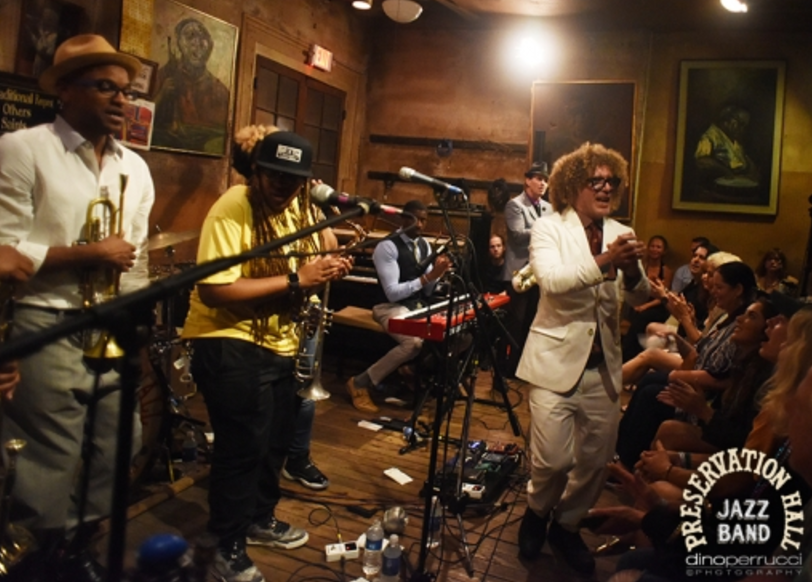
Harris’ manner is mellow and welcoming, almost country-like, as the Lower Ninth Ward was in the ‘30s and ‘40s, when chickens roamed freely and horses were hitched in backyards.
“I have this influence of country, hip-hop, and rhythm and blues. I have so many things on the table that I didn’t want to leave out anything because it is all New Orleans.”
He was able to freely use his influences to arrange the music on the So It Is project, surprisingly, without any rules for an organization primarily known for playing traditional jazz. It was Jaffe who said, “Just do you,” shaking his head at the look of amazement on Harris’ face.
Harris leans forward in his hundred-year-old chair and looks around the room before saying, “The one thing that we all share is love—genuine love for one another. Everybody has compassion, and we give our all for each other. It takes a lot of love. The music represents the love. All the times we are all together? Man, we are happy.”
Saxophonist Clint Maedgen is a punk-rocker at heart, with a tender spot for Tom Waits and drum loops. On this winter day, he’s wearing a black suit and fedora, sporting a pencil-thin moustache and his omnipresent red bullhorn. Behind him are stacks of a dozen small black and-white televisions set to static screens. Bingo sheets line the walls in lieu of more traditional wallpaper. Shelves are filled with obscure sound-making toys and instruments, purchased on one of his many tours across the globe. Every inch of space is adorned with some kind of figurine, instrument or photo. A huge baby head is staring out from under his kitchen loft bed as he launches into a solo performance—a disco-ball-popping, hand-puppet-shadowing, beat-boxing, drum-looping madness of a one-man show. Though this moment and his background in the New Orleans alt scene scream avantgarde, he is able to translate these radically different audio influences into his playing.
“I am drawn to street noise,” he says. “Each city has its own ambient soundtrack. Cuba, from a New Orleans perspective, was particularly mind-blowing, as Cuba has a whole side of sounds in itself, especially since New Orleans isn’t a quiet place. The cars in Cuba all make certain sounds—all of these cars are made before 1960. So you just aren’t hearing, you are feeling the exhausts and engines that made these raw and visceral sounds. It was a cacophony of rumbling, grit that you felt in your teeth.”
The Cuban experience brought Maedgen back to simpler times and also brought to light the mirror images between New Orleans and Cuba: a conga line featuring men hitting a brick with a wrench instead of drums, the grandmother watching her grandbabies in diapers play on the cobblestone street while smoking a cigarette, and people’s faces looking like his neighbors’ on Frenchmen Street.
“Cuba is so much more than everything here. The everyday walk of life is a soundtrack of food vendors yelling, car sounds and percussion being made from anything lying around. It was fascinating in that way, back to a more organic style of life,” he says. “If someone is lucky enough to have an instrument there, they are playing it all day long and sleeping with it, like we did as a kid,” Maedgen continues, stressing the significance of even possessing an instrument in Cuba.
“We are so blown out as a society and a culture here in America now—that experience is not the same here and will never be. Just how people went about their day and how there were a dozen people living in a house, no one on their cell phones and little kids skipping rope—inspiration everywhere.” 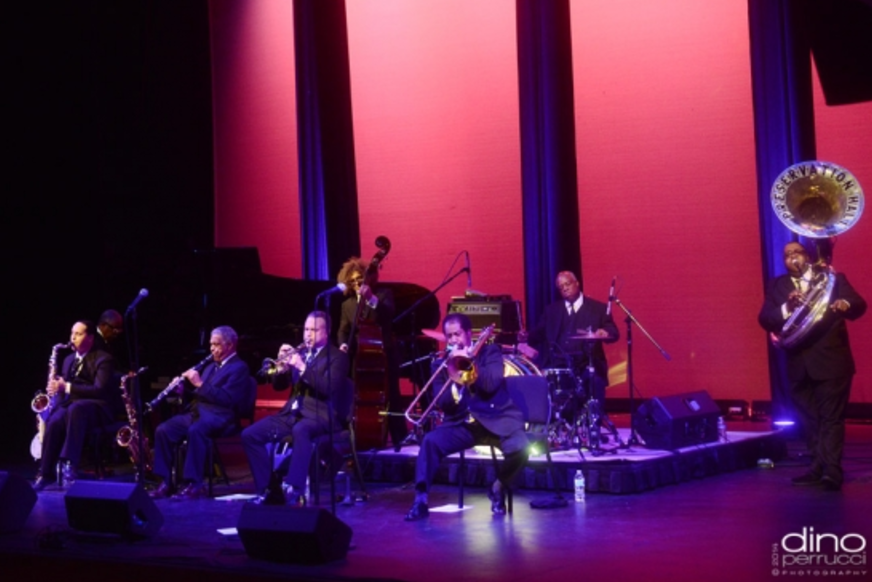
The choice to debunk from their French Quarter barracks and hole up in El Paso, Texas to record So It Is set the tone for the band’s personal and sonic exploration. “This is the first time we recorded outside of New Orleans,” Jaffe says. “We all felt it was important we record somewhere we could reflect, be introspective and focus, as going where we’ve gone on this project is unchartered for us.”
Sitek is known for getting artists out of their comfort zones, and pushing and stretching them to the fibers of their own capabilities, which was exactly what Jaffe was searching for. He also was the driving force behind moving the sessions outside New Orleans to the Sonic Ranch in El Paso. Jaffe describes the studio as “a magic place” that’s “special in the way Preservation Hall is special.” The sessions immediately clicked; tracks like single “Santiago,” “La Malanga” and “One Hundred Fires” would fit snugly onstage at Coachella or Jazz Fest, both of which the band played this spring.
“Dave challenged all of us to make great music,” Jaffe says. “He believes in searching to the point of mayhem. That’s a scary place to go when making music that has a responsibility to its city. You want to make music your community cheers for. I love that about Bruce Springsteen—he’s a hometown, New Jersey hero.”
“We tried to keep in mind that vibration is everything,” Sitek adds. “Allowing a listener to blast the speakers and get your whole being inside the song. Inhabiting the music— that’s your chance to transform and become joy, sorrow—it’s an exultation of the infinite, fearless. Let the horns inform.”
The resulting album, which was released in April via Legacy, is both a fusion of the disparate African sounds that have informed the music of Cuba and New Orleans for generations and a continuation of Pres Hall’s own 21st-century evolution. Jaffe and Gabriel penned the album’s tracks, tapping into a blend of Afro-Cuban grooves and psychedelic-jazz experiments that share a familiar bond with the classic Crescent City sounds that their ensemble has preserved for over 50 years.
“He challenged us to be the musicians we are, and everyone in the band is at the top of their musical game,” Jaffe says. “Dave knows this and he knew we could push ourselves creatively in this project.”
And, despite their new recording location and more global palette of sounds, Jaffe still considers So It Is to be a true New Orleans statement— and one that captures one of America’s cultural jewels at a unique time in the country’s social and political history.
“It was important that we made a very honest record—an album that is the sign of the times,” he says, summing up the band’s mission since their Cuban journey two years ago. “In New Orleans, we play music and dance at our saddest moments, contrary to the way most of this country deals with sadness. The thing about New Orleans music is it doesn’t just rise above. It exists above everything else.”



















